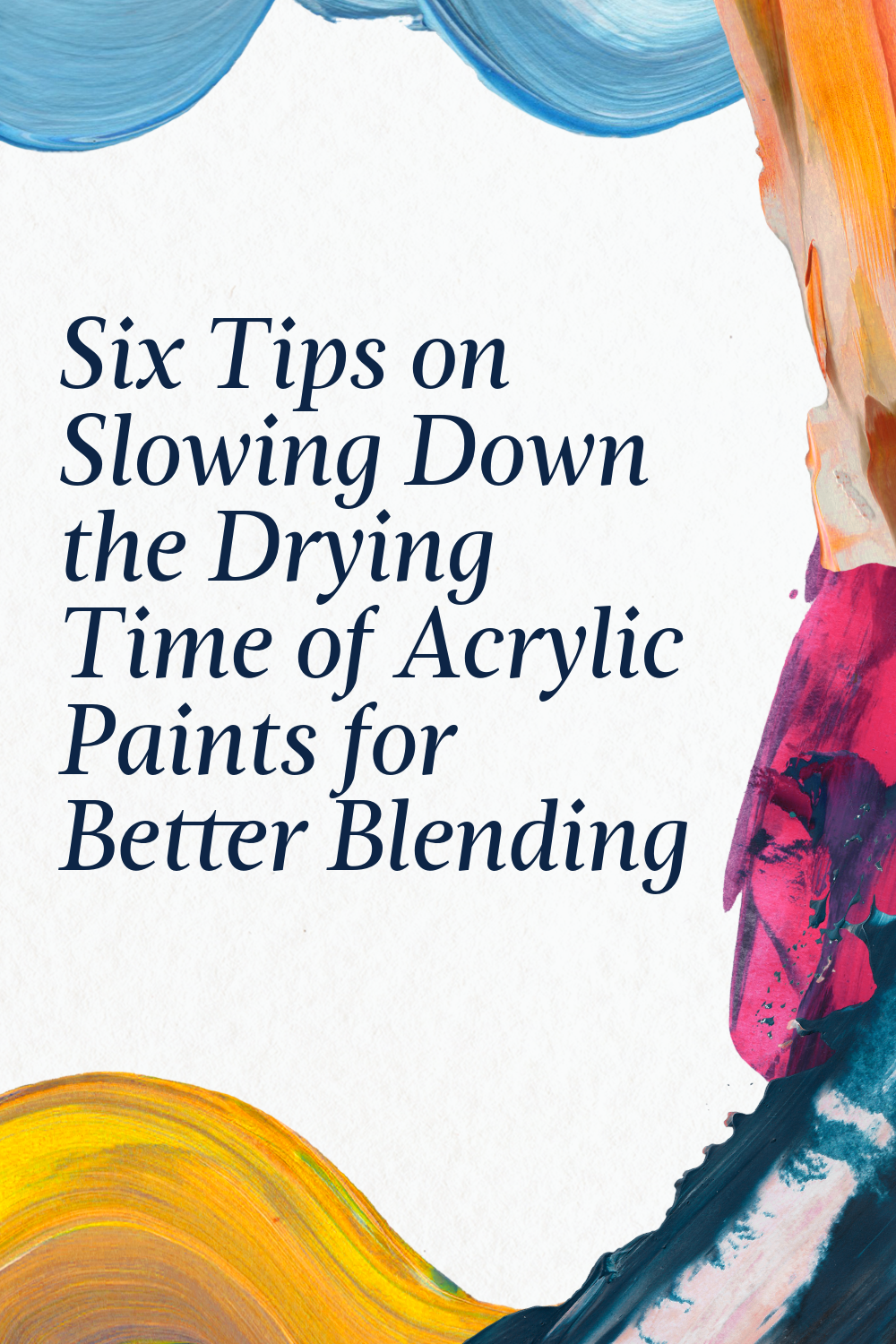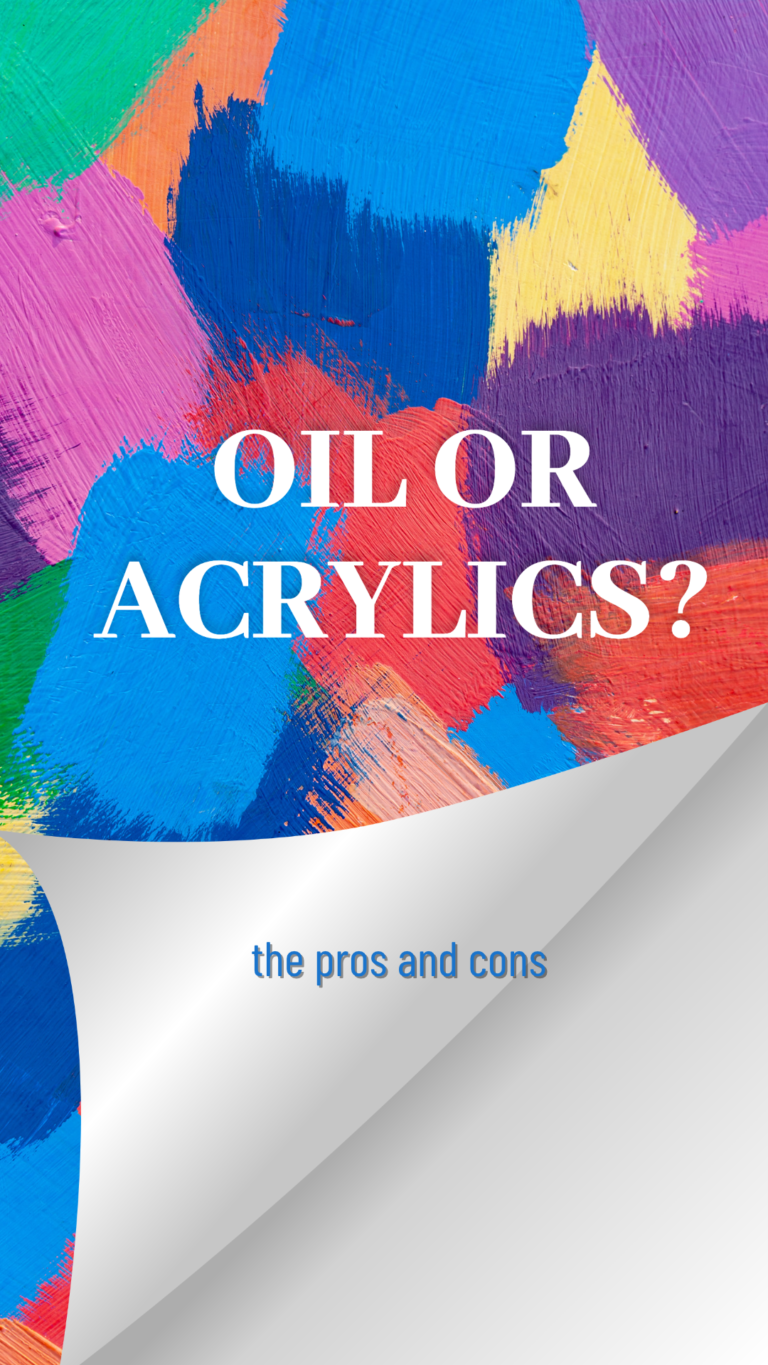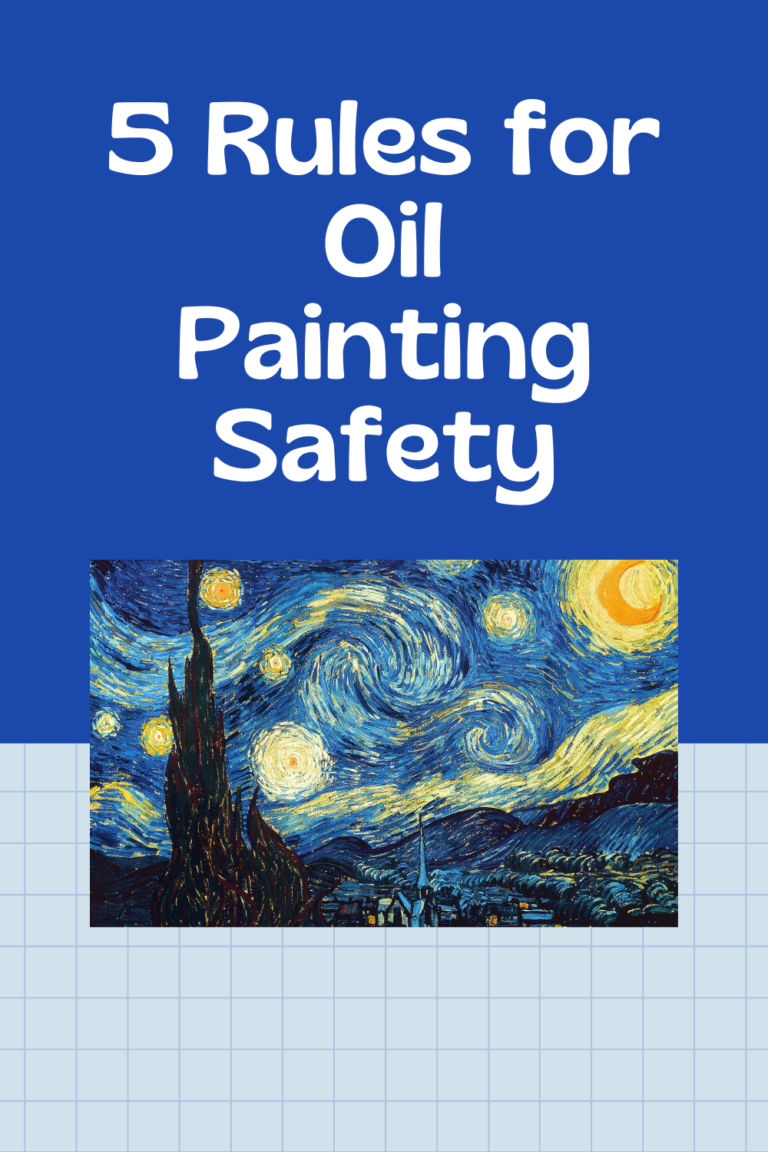Acrylic paints are beloved by artists for their versatility, vibrant colors, and quick drying times.
However, the fast drying characteristic of acrylics, can also pose challenges for techniques that require more open time, such as blending.
Michele from my private FB group asked me:
“I am having a terrible time trying to blend colors on a canvas with acrylics, like doing the colors in the sky in a vibrant sunrise, due to a previous color drying so fast that when I go to add the next color and want to ‘blend’ those two colors where the edges meet, I can’t blend because 1st color dried too fast. Help! How do you overcome this?”
I have six simple tips for everyone has this problem with blending their acrylic paints.
## 1. Use a Stay-Wet Palette
A stay-wet palette is an invaluable tool for acrylic painters.
It consists of a sealed container with a moist sponge and a permeable palette paper on top where you place your paints. The moisture from the sponge keeps the paints wet for extended periods, even for several days.
By preventing the paints on your palette from drying out too quickly, you have more time to work with them, making blending easier and more effective.
They usually have a patented sponge insert and special permeable palette paper. Together, they provide acrylics and other water-miscible paints with a constant source of moisture.
Simply moisten the sponge and lay it inside the paint palette tray, then place the palette paper on top. When the lid is open, the paints will have an extended open time. When the lid is snapped shut, the container will maintain a moist atmosphere that preserves paints.
Here is the one I used in my studio: https://amzn.to/3SSErmz
You can even use it for oil painting. Simply remover the paper and sponge and replace them with disposable oil paper palette.
(The links in this post contains affiliate link with no extra cost to you, if you choose to use them then you will help this little blog keep going.)
## 2. Incorporate Retarders or Slow-Drying Mediums
Retarders, also known as slow-drying mediums, are additives that you can mix with acrylic paints to extend their drying time.
These products slow down the evaporation process of the water in the paint, providing artists with more time to blend colors on the canvas. It’s important to follow the manufacturer’s instructions regarding the proportion of retarder to paint to ensure the best results and maintain the stability of the paint film.
This is the one I’d recommend: https://amzn.to/3IeZVEp
## 3. Spray Water or a Blending Medium
A fine mist spray bottle filled with water or a blending medium can be used to lightly mist the surface of your painting or palette to keep the paints moist. This method is particularly useful for preventing the paint from drying too quickly while you’re working.
However, be cautious not to over-wet the surface, as this can dilute the paints too much or cause unwanted drips—I have made way too many mistakes like this!
## 4. Spray your canvas with water before you paint
Use a spray bottle and lightly spray your entire canvas with water. This little step not only will help your paint dry slower but also make your brush glide more even and smooth on the canvas.
## 5. Use a Wet-on-Wet Technique
The wet-on-wet technique involves applying wet paint onto a wet surface or mixing wet paints directly on the canvas. This method naturally extends the drying time of acrylics, as the moisture from the underlying layer keeps the upper layers wetter for longer. To employ this technique, you can first apply a thin layer of a slow-drying medium or water to your canvas before adding your colors.
## 6. Adjust Your Environment
The drying time of acrylic paints can also be influenced by environmental conditions.
High temperatures, low humidity, and air flow can all accelerate drying.
If possible, work in a cooler, more humid environment and reduce air flow by turning off fans or air conditioning, or by working in a space without drafts.
A humidifier can also help to increase humidity levels in your workspace, slowing the drying time of the paint.
I hope these tips are helpful! Share with a friend if you like. And don’t forget to join my private Facebook group to ask any questions you have!




